-
 Bitcoin
Bitcoin $113700
0.66% -
 Ethereum
Ethereum $3471
-0.04% -
 XRP
XRP $2.885
-0.16% -
 Tether USDt
Tether USDt $1.000
0.05% -
 BNB
BNB $747.8
-0.10% -
 Solana
Solana $161.1
-0.98% -
 USDC
USDC $1.000
0.02% -
 TRON
TRON $0.3255
-0.22% -
 Dogecoin
Dogecoin $0.1980
1.46% -
 Cardano
Cardano $0.7237
2.87% -
 Hyperliquid
Hyperliquid $37.79
0.87% -
 Stellar
Stellar $0.3941
5.48% -
 Sui
Sui $3.422
1.35% -
 Chainlink
Chainlink $16.14
1.97% -
 Bitcoin Cash
Bitcoin Cash $540.7
1.55% -
 Hedera
Hedera $0.2432
4.26% -
 Ethena USDe
Ethena USDe $1.001
0.04% -
 Avalanche
Avalanche $21.31
-0.06% -
 Toncoin
Toncoin $3.624
1.19% -
 Litecoin
Litecoin $109.0
0.76% -
 UNUS SED LEO
UNUS SED LEO $8.967
0.09% -
 Shiba Inu
Shiba Inu $0.00001217
1.84% -
 Polkadot
Polkadot $3.584
1.85% -
 Uniswap
Uniswap $9.123
2.03% -
 Monero
Monero $294.7
0.87% -
 Dai
Dai $0.0000
0.01% -
 Bitget Token
Bitget Token $4.322
0.60% -
 Pepe
Pepe $0.00001048
2.65% -
 Cronos
Cronos $0.1329
2.05% -
 Aave
Aave $257.0
1.88%
How to apply for Upbit API? What permissions are there?
To use Upbit's API, verify your account, apply for access, set permissions, and secure your keys; it enables automated trading and portfolio management.
May 20, 2025 at 12:07 pm
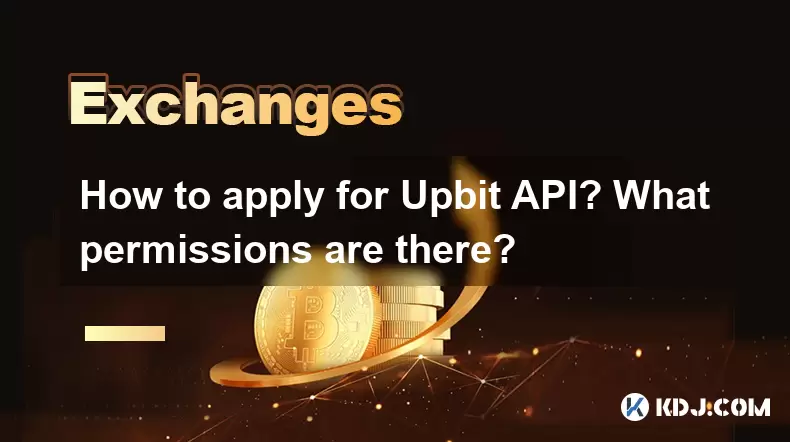
Introduction to Upbit API
Upbit is one of the largest cryptocurrency exchanges in South Korea, offering a robust API for users who wish to automate trading and manage their portfolios programmatically. Applying for the Upbit API involves a series of steps that ensure your account is ready for API usage. Additionally, understanding the permissions available through the Upbit API is crucial for utilizing its full potential.
Preparing Your Upbit Account
Before you can apply for the Upbit API, you need to ensure that your Upbit account is fully verified. Verification is a mandatory step that involves submitting personal identification documents and completing the necessary KYC (Know Your Customer) procedures. Once your account is verified, you can proceed to apply for API access.
- Log into your Upbit account and navigate to the account settings or profile section.
- Complete the verification process if you haven't already. This usually involves uploading a government-issued ID and other required documents.
Applying for Upbit API Access
Once your account is verified, you can apply for API access. Here are the detailed steps to do so:
- Navigate to the API section within your Upbit account. This is usually found under the settings or developer section.
- Click on the 'Create New API Key' button. You will be prompted to set up your API key and secret key.
- Enter a name for your API key to help you identify it later. This name can be anything that makes sense to you.
- Set up the permissions for your API key. Upbit offers various permissions that you can choose from, depending on your needs.
- Confirm your request and wait for Upbit to process your application. Once approved, you will receive your API key and secret key.
Understanding Upbit API Permissions
Upbit API permissions are crucial as they determine what actions your API key can perform. Here are the main types of permissions you can set:
- Read Permission: This allows you to retrieve account information, order history, and other data without the ability to make changes or execute trades.
- Trade Permission: With this permission, you can place orders, cancel orders, and manage your trading activities programmatically.
- Withdraw Permission: This is the most sensitive permission, allowing you to withdraw funds from your Upbit account. It should be used cautiously and only when necessary.
When setting up your API key, you can choose to enable or disable these permissions based on your specific needs. It's important to only grant the permissions that are necessary for your intended use to minimize security risks.
Securing Your Upbit API Keys
Securing your Upbit API keys is paramount to protect your account from unauthorized access. Here are some best practices to follow:
- Never share your API keys with anyone. Treat them like your password.
- Use environment variables or secure storage solutions to store your keys instead of hardcoding them in your scripts.
- Regularly rotate your API keys. Upbit allows you to generate new keys and deactivate old ones, which is a good practice to enhance security.
- Monitor your API activity through Upbit's dashboard to detect any suspicious behavior.
Using the Upbit API for Trading
Once you have your API keys and have set the appropriate permissions, you can start using the Upbit API for trading. Here are some basic steps to get started:
- Install the Upbit API client library for your preferred programming language. Upbit provides libraries for Python, Java, and other languages.
- Initialize the API client with your API key and secret key. This is usually done by passing the keys to the client constructor.
- Use the client to fetch market data, place orders, or retrieve account information. The specific methods will depend on the library you are using.
For example, if you are using Python, you might use the following code to initialize the client:
from upbit.client import Upbitapi_key = 'your_api_key_here'
secret_key = 'your_secret_key_here'
client = Upbit(api_key, secret_key)
You can then use the client object to call various methods provided by the Upbit API.
Troubleshooting Common Issues
While using the Upbit API, you may encounter common issues such as invalid API keys, rate limiting, or permission errors. Here are some tips to troubleshoot these issues:
- Invalid API Keys: Ensure that you are using the correct API key and secret key. Double-check that you have not accidentally shared or exposed your keys.
- Rate Limiting: Upbit imposes rate limits to prevent abuse. If you exceed these limits, you will need to wait before making further requests. Consider implementing a delay between API calls.
- Permission Errors: Make sure that your API key has the necessary permissions to perform the actions you are attempting. You may need to regenerate your key with the correct permissions.
FAQ
Q: Can I use the Upbit API to trade on behalf of other users?
A: No, the Upbit API is designed for individual use and cannot be used to trade on behalf of other users. Each user must apply for their own API key and manage their own trading activities.
Q: How often should I rotate my Upbit API keys?
A: It is recommended to rotate your Upbit API keys at least every 30 days to enhance security. However, if you suspect any unauthorized access, you should rotate your keys immediately.
Q: Are there any fees associated with using the Upbit API?
A: Upbit does not charge additional fees for using the API. However, standard trading fees and withdrawal fees still apply to transactions made through the API.
Q: Can I use the Upbit API to automate my trading strategies?
A: Yes, the Upbit API is designed to support automated trading strategies. You can use it to place orders, monitor market conditions, and execute trades based on your predefined rules.
Disclaimer:info@kdj.com
The information provided is not trading advice. kdj.com does not assume any responsibility for any investments made based on the information provided in this article. Cryptocurrencies are highly volatile and it is highly recommended that you invest with caution after thorough research!
If you believe that the content used on this website infringes your copyright, please contact us immediately (info@kdj.com) and we will delete it promptly.
- Navigating the Meme Coin Mania: Cold Wallets, SHIB, and DOGE in 2025
- 2025-08-03 22:30:16
- Bitcoin's Price Fall and Scrutiny: What's a New Yorker to Think?
- 2025-08-03 22:30:16
- Altcoins Most Searched: Hedera (HBAR) and the ETF Hype
- 2025-08-03 20:50:16
- Arbitrage Adventures: Creditcoin, Kaspa, and Chasing Crypto Profits
- 2025-08-03 20:30:16
- Claude HIVE & Code Agents: Faster Coding Revolution?
- 2025-08-03 20:50:16
- Trump Media, Bitcoin, and Crypto: A Surprising Alliance in the Making?
- 2025-08-03 21:30:16
Related knowledge

How to set and manage alerts on the Gemini app?
Aug 03,2025 at 11:00am
Understanding the Gemini App Alert SystemThe Gemini app offers users a powerful way to stay informed about their cryptocurrency holdings, price moveme...

What are the websocket feeds available from the Gemini API?
Aug 03,2025 at 07:43pm
Overview of Gemini WebSocket FeedsThe Gemini API provides real-time market data through its WebSocket feeds, enabling developers and traders to receiv...
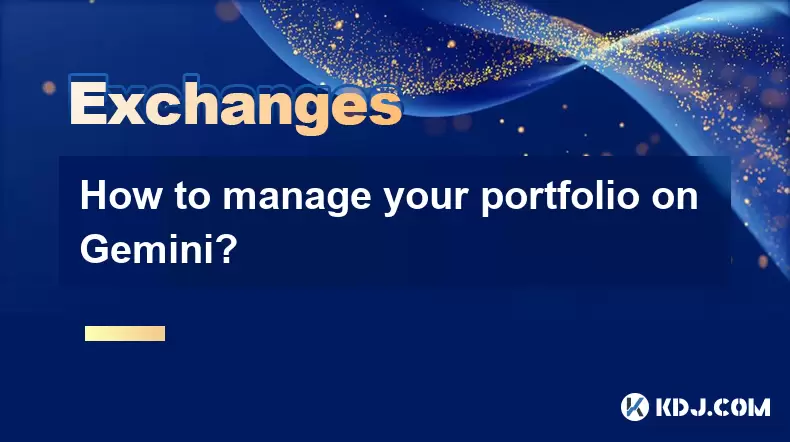
How to manage your portfolio on Gemini?
Aug 03,2025 at 10:36am
Accessing Your Gemini Portfolio DashboardTo begin managing your portfolio on Gemini, you must first log in to your account through the official websit...
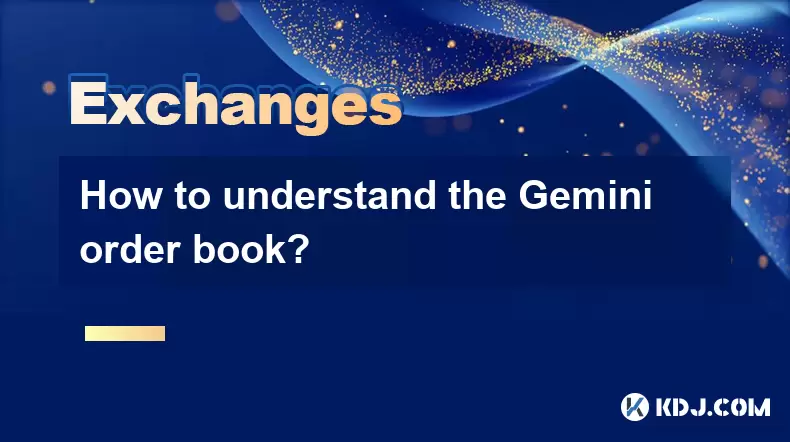
How to understand the Gemini order book?
Aug 02,2025 at 03:35pm
What Is the Gemini Order Book?The Gemini order book is a real-time ledger that displays all open buy and sell orders for a specific cryptocurrency tra...
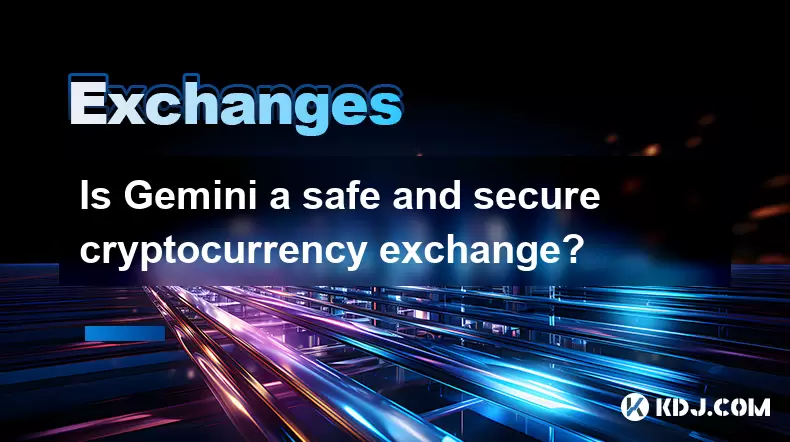
Is Gemini a safe and secure cryptocurrency exchange?
Aug 02,2025 at 10:42pm
Understanding Gemini’s Regulatory ComplianceGemini is a New York State-chartered trust company, which places it under the supervision of the New York ...
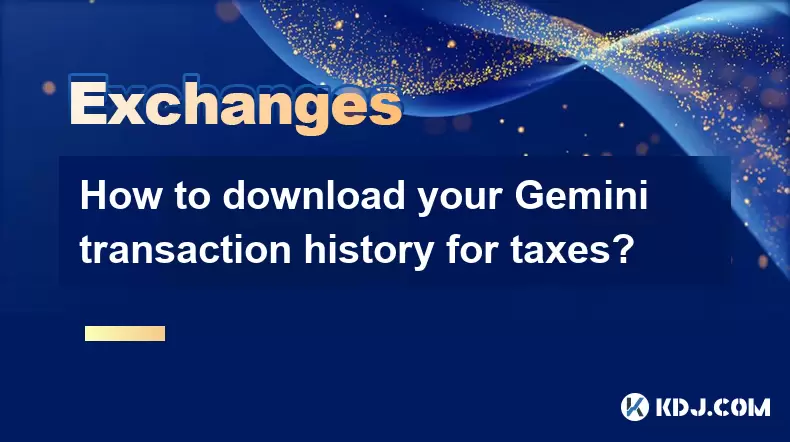
How to download your Gemini transaction history for taxes?
Aug 03,2025 at 09:15am
Understanding Gemini Transaction History for Tax PurposesWhen preparing your cryptocurrency tax filings, having a complete and accurate record of all ...

How to set and manage alerts on the Gemini app?
Aug 03,2025 at 11:00am
Understanding the Gemini App Alert SystemThe Gemini app offers users a powerful way to stay informed about their cryptocurrency holdings, price moveme...

What are the websocket feeds available from the Gemini API?
Aug 03,2025 at 07:43pm
Overview of Gemini WebSocket FeedsThe Gemini API provides real-time market data through its WebSocket feeds, enabling developers and traders to receiv...

How to manage your portfolio on Gemini?
Aug 03,2025 at 10:36am
Accessing Your Gemini Portfolio DashboardTo begin managing your portfolio on Gemini, you must first log in to your account through the official websit...

How to understand the Gemini order book?
Aug 02,2025 at 03:35pm
What Is the Gemini Order Book?The Gemini order book is a real-time ledger that displays all open buy and sell orders for a specific cryptocurrency tra...

Is Gemini a safe and secure cryptocurrency exchange?
Aug 02,2025 at 10:42pm
Understanding Gemini’s Regulatory ComplianceGemini is a New York State-chartered trust company, which places it under the supervision of the New York ...

How to download your Gemini transaction history for taxes?
Aug 03,2025 at 09:15am
Understanding Gemini Transaction History for Tax PurposesWhen preparing your cryptocurrency tax filings, having a complete and accurate record of all ...
See all articles

























































































